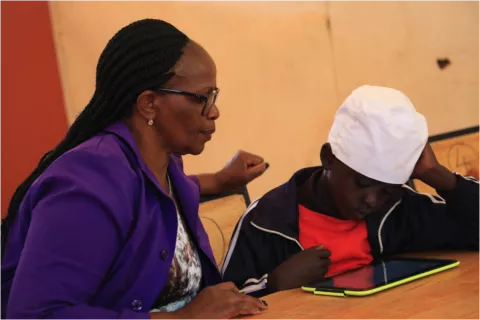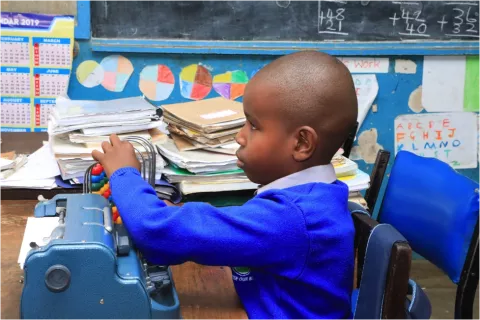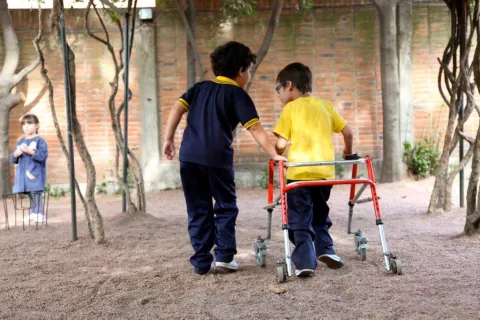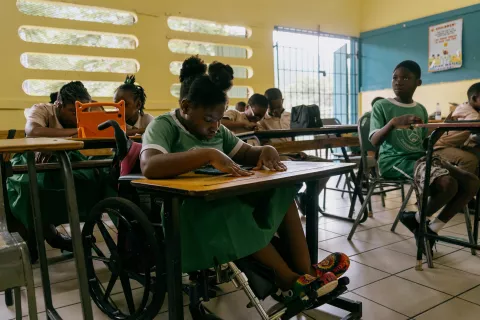Kenya Pilot - Human Interest Story Part 1
Making digital learning accessible for learners with deaf or hard of hearing
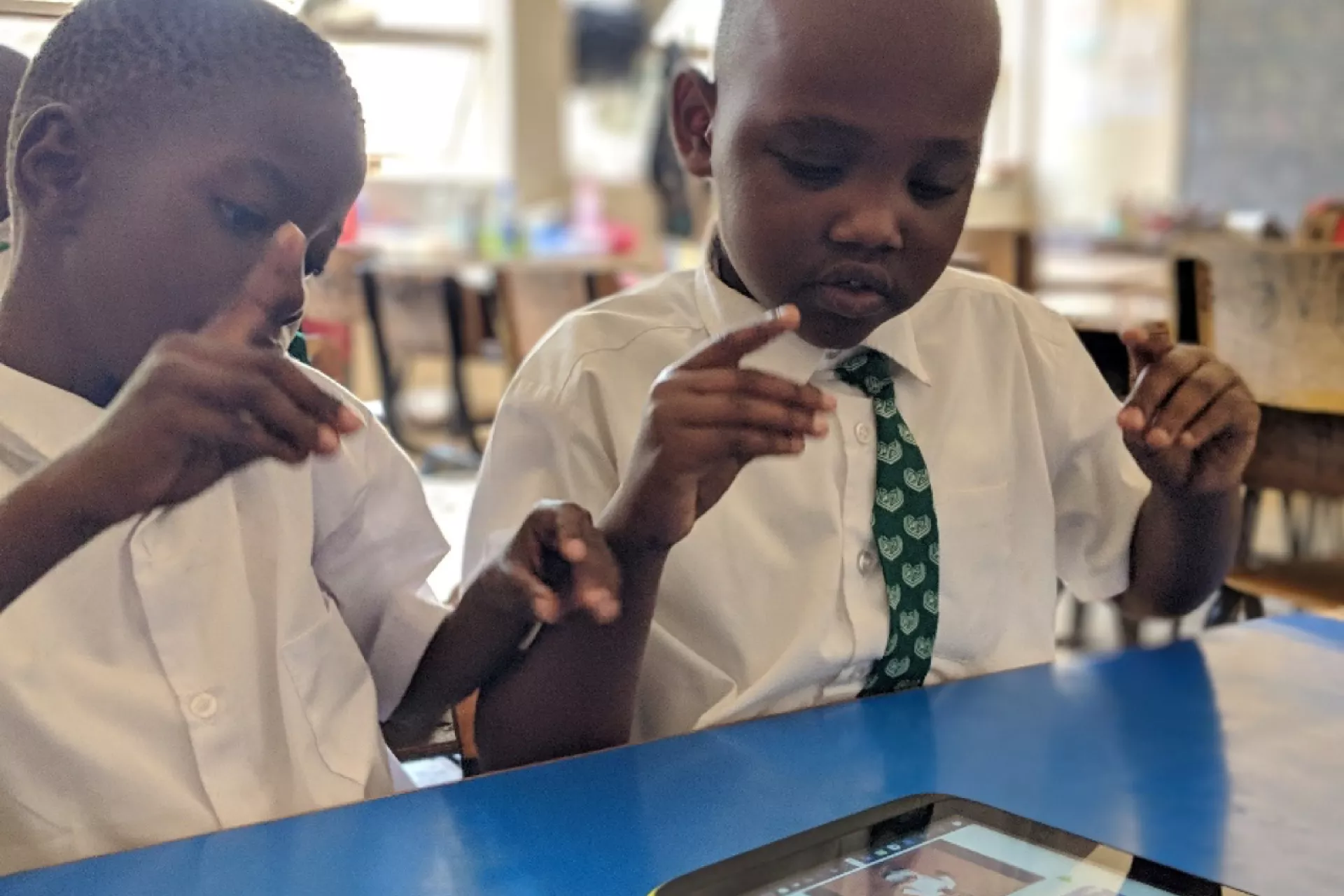
- Available in:
- English
- Español
Making digital learning accessible for learners who are deaf or hard of hearing
In 2018, The Ministry of Education developed a Sector Policy for Learners and Trainees with Disabilities. The policy defines special needs education as, “education which provides appropriate modification in curriculum delivery methods, educational resources, medium of communication or the learning environment to cater for individual differences in learning.”
In Kenya, children with disabilities continue to face immense barriers in accessing education. For example, in some cultures, when a child is born with disability, it is falsely believed that they have been cursed and are often hidden in their homes. As a result, they remain invisible and marginalized in the society. Children with hearing impairment especially are often excluded from communicating with their peers and other members of society even though Kenyan Sign Language has been recognized as an official language in the Kenyan Constitution of 2010.
The Government of Kenya embarked on the Digital Literacy Programme (DLP) in 2013 with the aim to equip all primary schools in Kenya with computer tablets and increase digital literacy of learners. The Aga Khan Primary School in Nairobi, Kenya, has a unit for hearing impairment catering for 153 learners. The school received 89 laptops. “One of our challenges has been the fact that we had not yet received content for learners with hearing impairment. We thought that we had been forgotten. We are glad to see you here today,” says the headteacher.
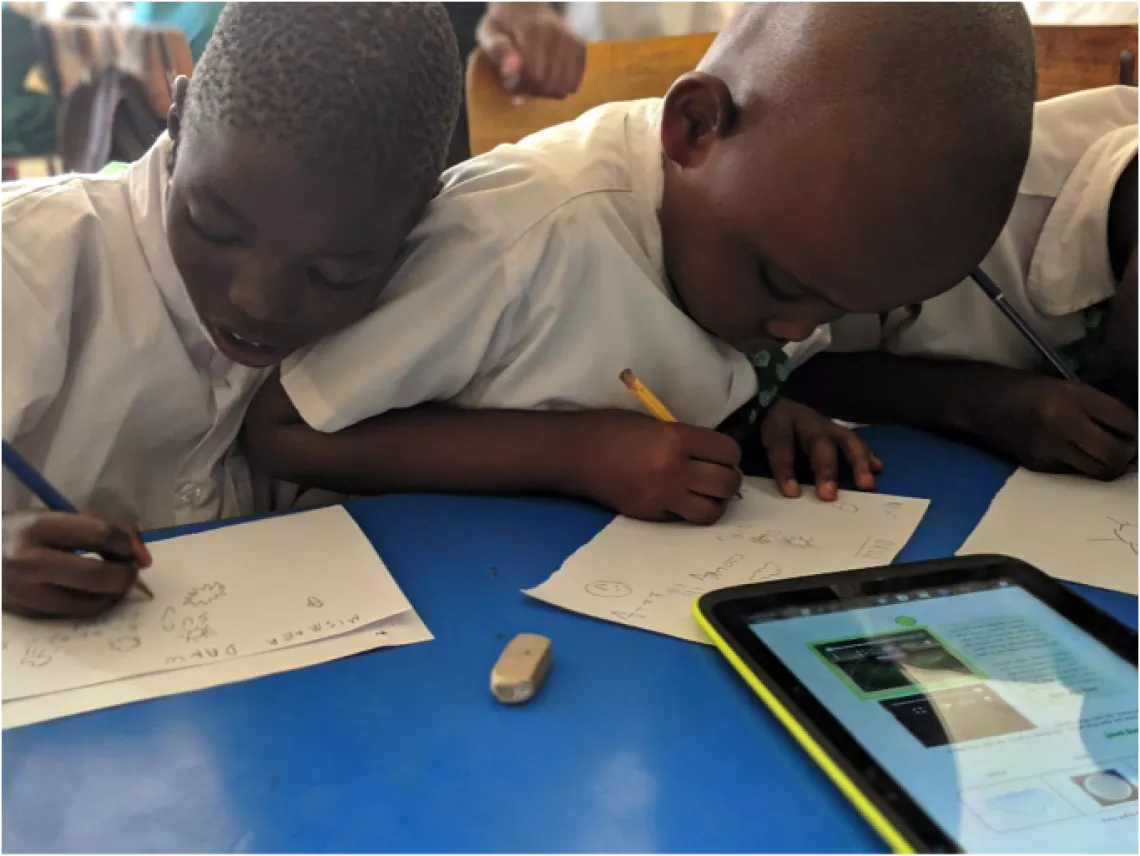
On 4 March 2019, the Kenya Institute of Curriculum Development (KICD) together with UNICEF visited the school to install the pilot phase of an Environmental Activities Learners Book for Grade 1; an element entrenched in the Competence Based Curriculum.
“Who are they? Hello. You are welcome to our class.” This was a unique conversation with the learners. Their class teacher was keen to interpret the conversation between us and the learners in the room using Kenyan Sign Language. They were excited to see us and seemed curious to know more about the unfamiliar faces in their usually quiet classroom.
“We have a shortage of teachers for learners with hearing impairment. Children have to share a class and a teacher. For example, this class is composed of Grade 1 and Grade 3 pupils and I teach all of them,” the class teacher explains. Some of the learners have multiple disabilities.
“We have a shortage of teachers for learners with hearing impairment."
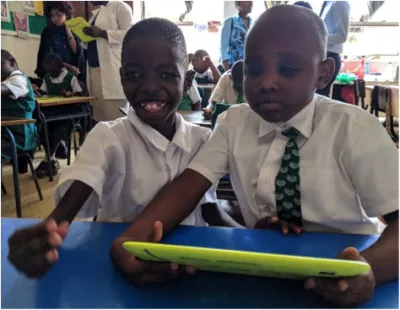
“It is important to take the pupils one step at a time. Before I introduce them to reading a passage in a textbook. I must write it on the board and teach them how to sign word by word. When the learners are younger, they may not be able to read all the words or comprehend what they mean. Simpler and shorter words are easier for them to finger spell and master,” she expounds.
The excitement from the learners the moment they saw the tablets was encouraging. They all wanted to touch them and discover what they do. In the beginning, we had to show them how to navigate the tablet to access the textbook but within a short time they mastered how to do it on their own.
Seven-year-old Liz Mwikali is hard of hearing. She had the chance to use the textbook with the Universal Design for Learning (UDL) feature, as well as the one customized for learners with hearing impairment. “It is very good. I like the children who are singing and how they are doing the signing in the book. I want to continue using this book. I also like the pictures and the drawings. I can spell boy, man, water and moon,” she announces proudly.
“You need to teach children in a language they best understand. For example, some of them lost their hearing when they had already acquired a language. If they had acquired Kiswahili first, you explain some of the things in the same language. I have even learned how to speak a little Kikuyu to teach those learners whose first language is Kiswahili,” the teacher continues to explain.
She further elaborates that one word could mean different things for a learner with hearing impairment. For example, the word ‘lazy’ could mean someone who does not like working hard or it could also be used to mean that a digital device is going off. If language is instilled early in life, it is easier for them to differentiate the meaning of words. Parents should also learn basic sign language so as to communicate with their children.
Collins Thiong’o, also seven was equally excited to use the tablets. According to his teacher, Collins, who is also partially blind, is a good lip reader. That allows him to follow a conversation even when the use of sign language is not present. He likes the pictures used in the book especially those used to illustrate the clouds. “I like the man who is interpreting. He is doing it well, but I want the font to be a bit bigger so that I can also read with the help of the highlights from the tablet,” he says before rushing off to have his lunch.
“This is my tablet, I will go home with it,” seven-year-old Derrick Myles made us burst with laughter after using his new book. He clearly enjoyed the new teaching method. Like his peers, he liked the pictures in the book.
It is evident that given the right environment, learners with hearing impairment will have a chance to have access to education like other learners. If more schools are equipped with similar textbooks, the engagement in classes will go up and lead to higher transition rates into secondary school and other institutions of higher learning.
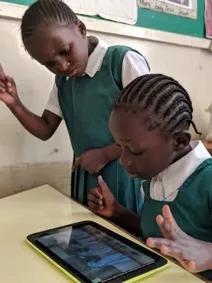
“You need to teach children in a language they best understand."

